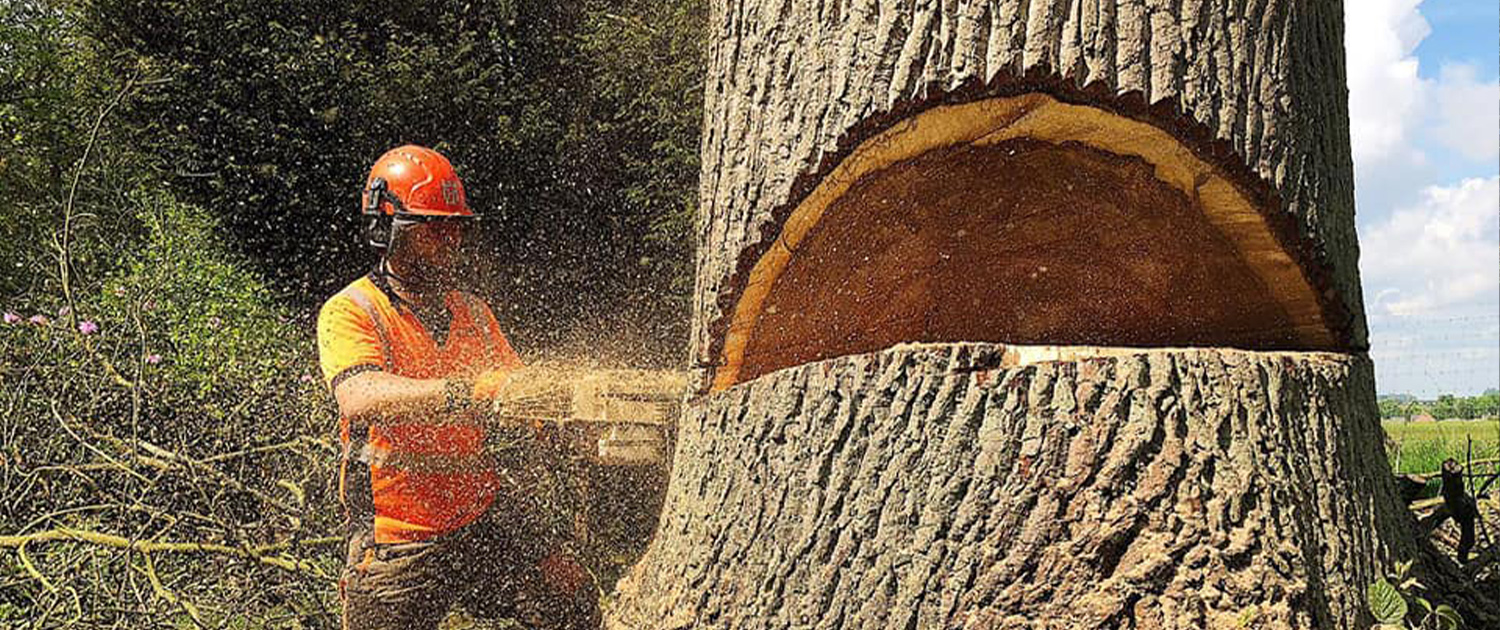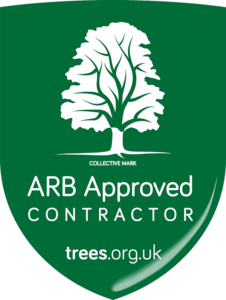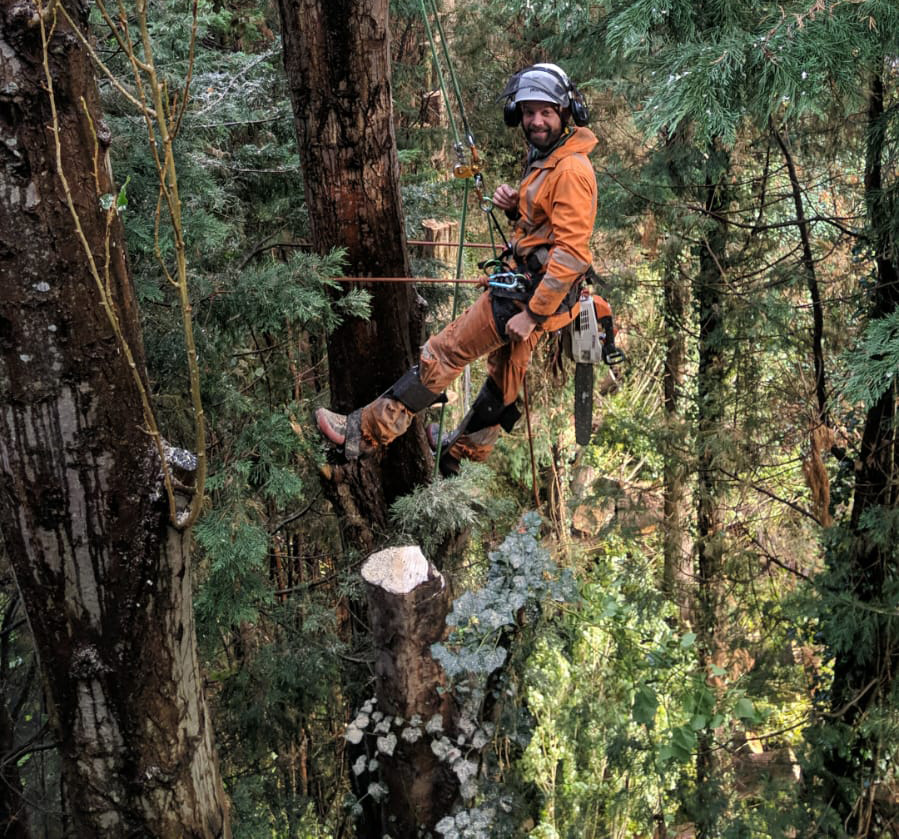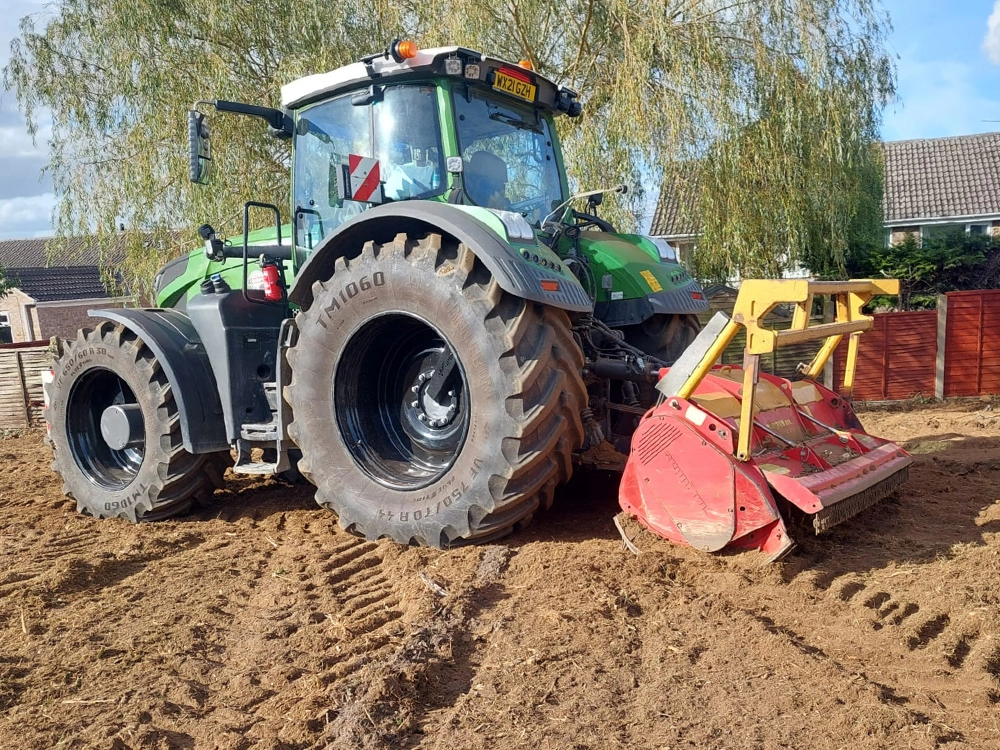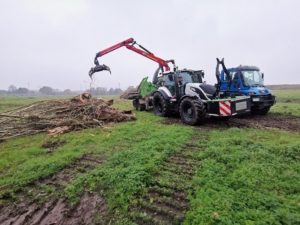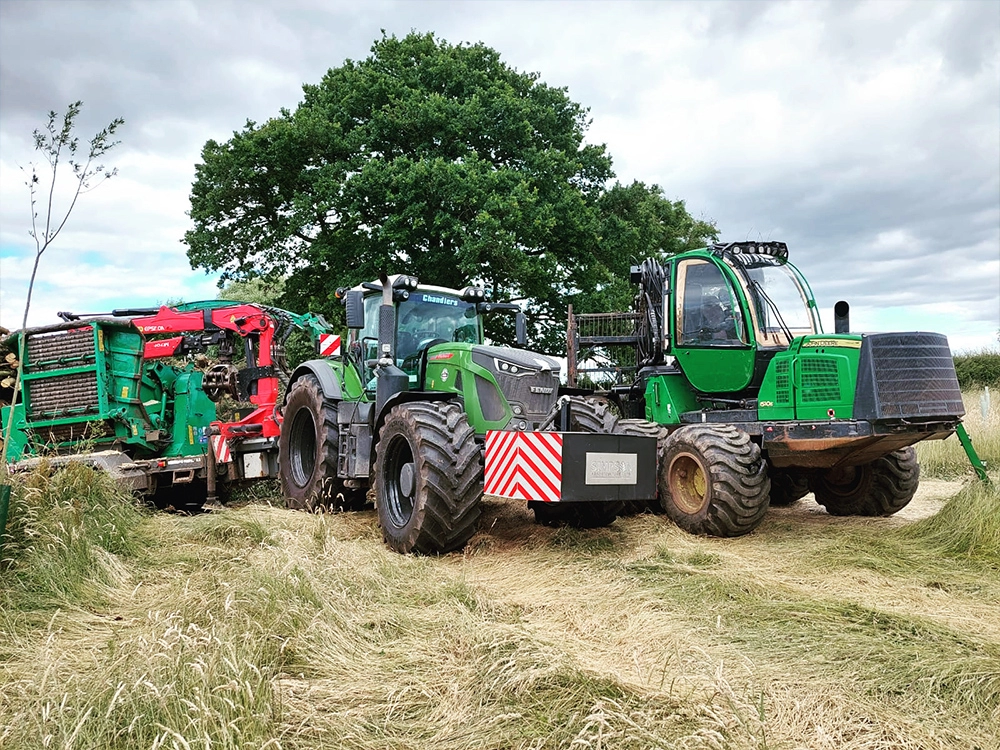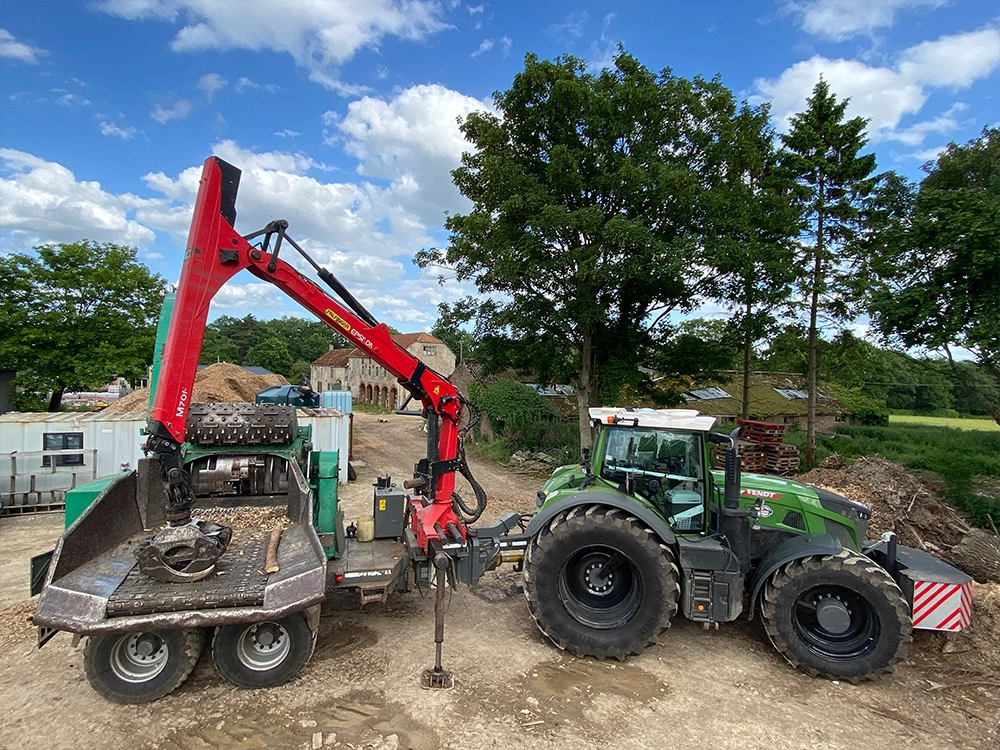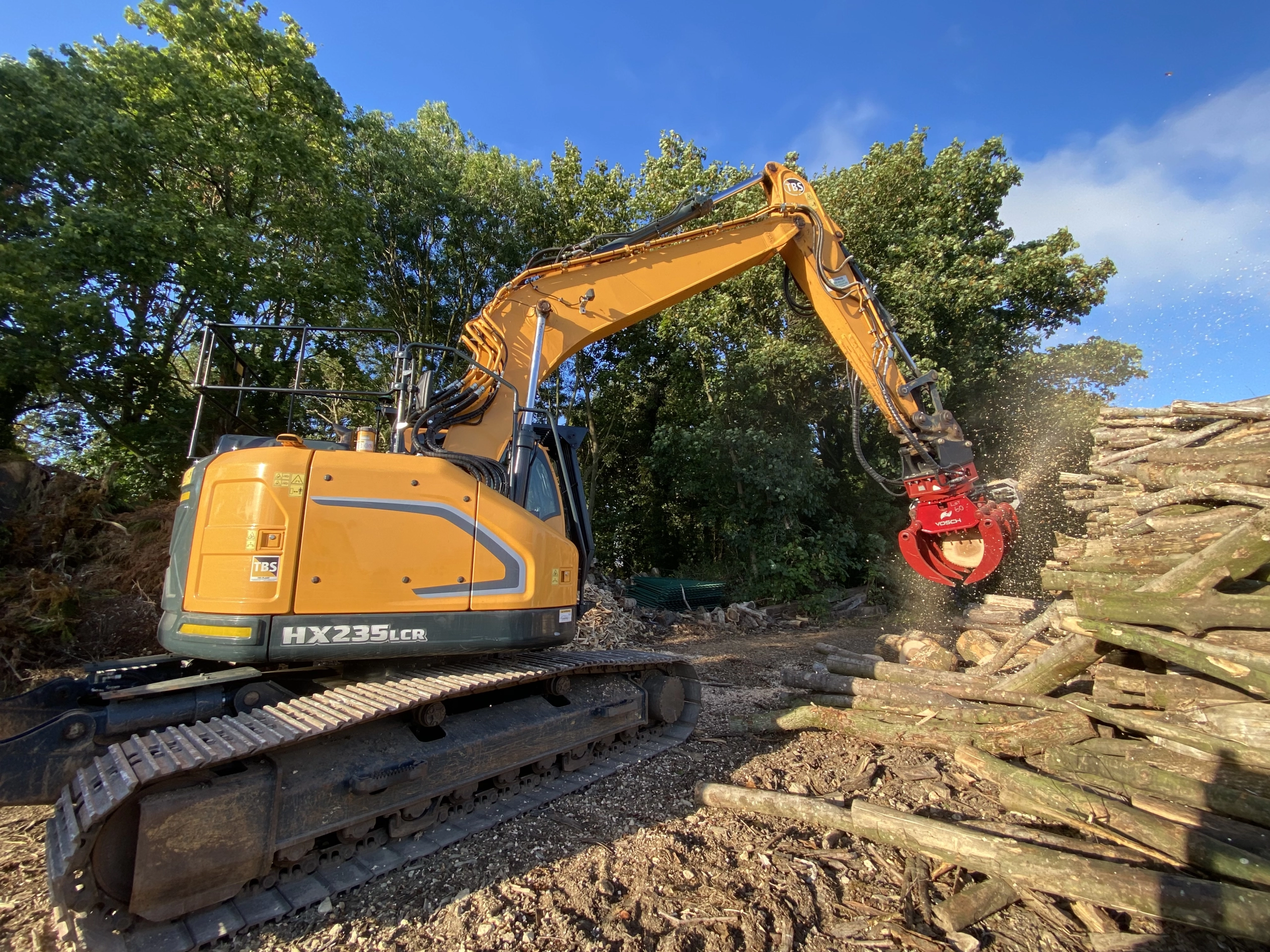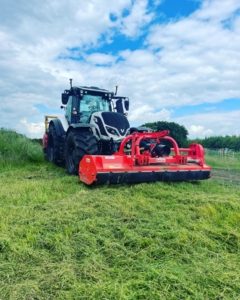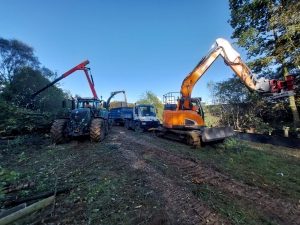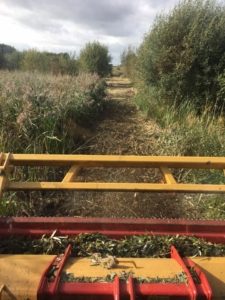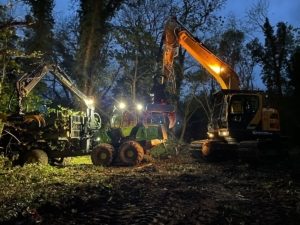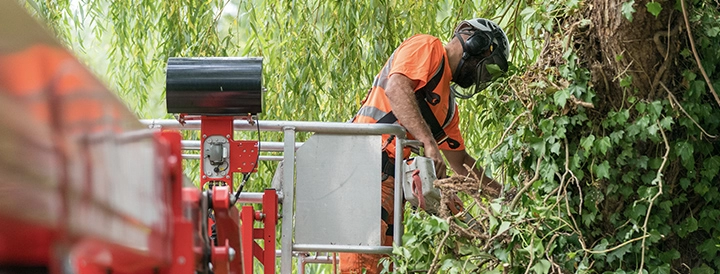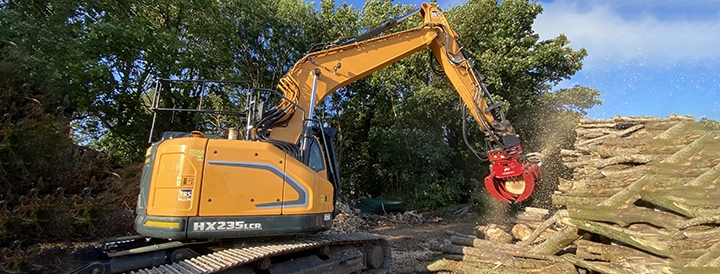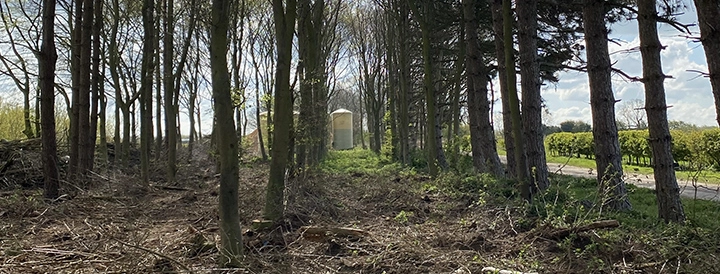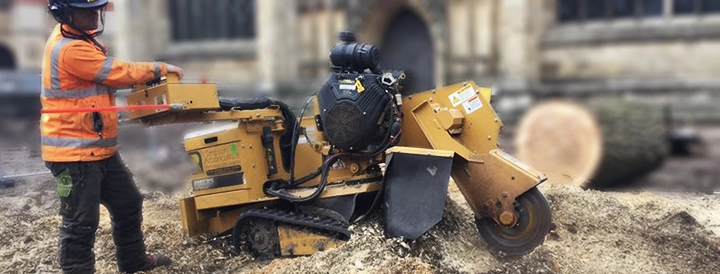Whilst trees are a fantastic asset and essential to the health of our environment, sometimes they do require removal. Cutting down trees could be required due to disease or decay. It could also be due to the tree posing a danger to people, and property or causing subsidence or other problems.
Our professional and trustworthy arborists will be able to discuss and explain the options for tree cutting and removal. These will largely depend on the size, scale and condition of the tree, as well as the surrounding garden/ area.
For information on removal of fallen trees please see our emergency and storm damage information.
Options for Tree Removal
Do you remove trees with ash dieback?
Yes.
Trees showing signs of ash dieback can be notoriously unpredictable, making it dangerous for our arborists to climb the tree and remove it manually. Therefore, using machinery is usually a better option. This may be done using a MEWP so our arborists can access the tree more safely, or through the use of our Vosch grapple saw attached to an excavator to remove the whole tree mechanically and from the ground. This also allows greater control over the tree and lowers the risk significantly.
Get in touch to discuss the approach we can take with trees showing signs of ash dieback.
When is mechanical tree removal used over arborists?
Simpson Arboriculture have invested in the latest mechanical technology for safely and economically removing trees. Mechanical tree dismantling can be used for a wide range of trees and for a variety of purposes. This approach is perfect for work in urban areas, on busy roads and bridges, or anywhere with limited workspace. Roadside trees can be removed safely and speedily, minimising road closure times.
Our specialist machinery is also ideal for removing trees that would be unsafe for our arborists to climb, such as ash trees suffering with ash dieback. These trees are notoriously unpredictable and can be dangerous for climbing arborists as the disease could cause the tree to fail.
When making the decision of which approach to take, we always refer to the hierarchy of safety for working at height as outlined in the section below.
What machinery do you use?
We use the following equipment for mechanical tree dismantling:
- Hyundai HX235 LCR excavator (2019)
- Doosan DX140LCR-5 excavator (2021)
- Vosch grapple saws attachments -1600 and 2000 models
- Fendt 942 tractor with Jenz Hem 593 Z whole tree chipper
- John Deere 1510e timber forwarder (2011)
- Mercedes Unimog U500 with grain
- Valtra T234 with Kesla timber crane
You can see full details on each of these on our machinery page.
Our tree shear is a hydraulic-powered cutter that cuts trees and woody vegetation with a mechanical slicing action. We also have our own VOSCH grapple saw which is a hydraulic-driven harvester chainsaw fitted to a timber handling grab. Both pieces of specialist equipment can be fitted to a 360 excavator.
Our excavators are fitted with an adequate Operator Protective System (OPS) which includes protection from chain shot in line with BS ISO 21876. They are also fitted with the latest systems for Falling Object Protective Structure (FOPS) and Roll Over Protection System) (ROPS) to ensure the safety of our operatives. These are maintained regularly and undergo all recommended LOLER inspections.
Can you help if the tree has already fallen?
Our experienced arborists can provide a timely and straightforward service for removing any fallen tree. Depending on the size of the tree and considerations such as access and location, this can be done using chainsaws to dismantle the tree on the ground. The waste wood can then be cut to a manageable size or alternatively can be chipped using a woodchipper.
Full information on fallen tree removal can be found here.
Should I replant trees?
At Simpson Arboriculture, we always actively encourage replanting wherever possible. Trees have a huge impact on reducing the effects of climate change by absorbing carbon dioxide and releasing oxygen back into the air. They also help to cool air temperatures.
Talk to our team about your plans for replanting and we would be happy to advise on location, time of year and tree species. We take on small scale replanting work in domestic gardens as well as larger replanting projects at a commercial level.
How do you manage the risks of working at height?
As with any work we carry out, the safety of our arborists is always of upmost importance. Our arborists are fully qualified and hold recognised qualifications for carrying out tree work at height. Aerial rescue and refresher training exercises are also carried out regularly to ensure that they continue to be confident and competent in their roles.
When quoting for work, the level of risk involved is considered and we would only plan to climb when required, e.g. if there is limited access for a MEWP or if working from the ground would be impractical.
Site-specific risk assessments are carried out before beginning any work on site. These take into account variables such as the weather and conditions. The team also designate a fully trained climber rescue to act in the event of an emergency.
How do you mitigate biosecurity risks?
We work hard to ensure that all our work systems and procedures are safe and minimise risk. We aim to manage in line with current legislation, guidance and accepted best practice and shall ensure that all foreseeable hazards are identified, arising risk is evaluated and suitable and sufficient controls are put in place to ensure and maintain a healthy and safe working environment. Our risk assessments include all foreseeable biosecurity arrangements. Controls are specified, and these are implemented to ensure the health and safety of all staff and others including the travelling public that may be affected by the operations.


